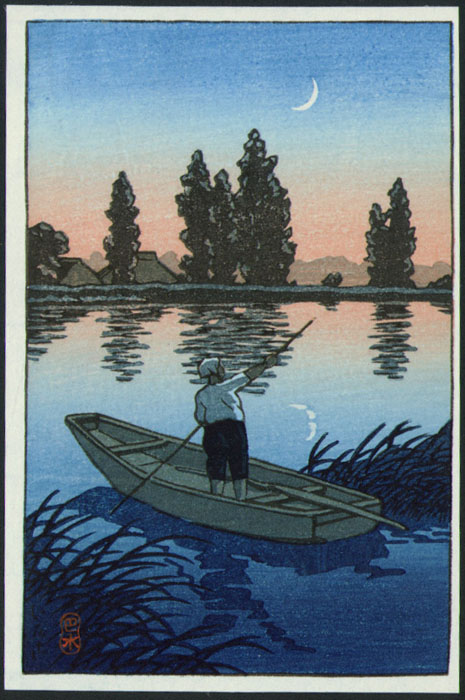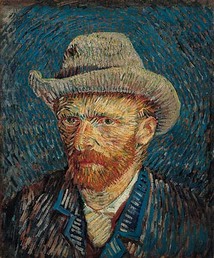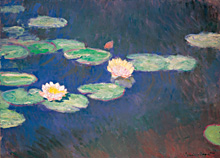Vincent Van Gogh, in a letter to his brother Theo 1888
Japan is no stranger to Van Gogh exhibitions. In fact, they are routinely the most popular, drawing crowds large enough to liken them to the morning commuter trains. This current exhibition at The National Art Center, on the 120th anniversary of his death, sets out to answer the question of how Van Gogh learned his painting techniques and established his signature style. While visiting the exhibition today – on one of the final days of the show – was almost unenjoyable because of the crowds, it did do a good job of demonstrating its premise.
Van Gogh did not arrive effortlessly at the style we all know and love. For him it was a long and laborious process. Beginning with the traditional painting and drawing techniques Van Gogh studied during his time in Holland, the color theory he learned from Eugene Delacroix and his experimentation with Impressionism, Pointillism and other new styles he encountered in Paris, he slowly worked his way towards his visionary style.
Yet most influential on Van Gogh’s vision were the Japanese woodblock prints (ukiyo-e) that he, like so many of his contemporaries, collected. Van Gogh and his brother Theo amassed hundreds and even dealt in them early in their careers. The bold compositions and vibrant flat color planes, truncated perspectives and naturalistic themes informed his later work. Elsewhere on the blog I have shown his copy of Hiroshige’s “Bridge: Sudden Rain at Atake”. He also copied a number of other Japanese prints, including Hiroshige’s “Flowering Plum Tree” and “The Courtesan” (inspired by Keisai Eisen).


Absorbing all of these elements, Van Gogh moved to Arles in 1888 where his style blossomed almost overnight into the individualistic style that today we all recognize as distinctly his. One of the highlight of the show is “The Bedroom” displayed opposite a life-size recreation of his actual bedroom.

Van Gogh truly learned by making his own copies of artwork that interested him. In addition to the ukiyo-e copies above, he attempted many studies of Jean-Francois Millet’s 1850 painting “The Sower” early in his career with no success. I think my favorite piece in this show is his much later version, painted in 1888. I had never seen it in person before and it is riveting.


Elsewhere in the blogosphere, Courtney Barnes of Style Court had a great post about the woodblock prints of Alice Ravenel Huger Smith, a “Charleston Renaissance” artist who made Japanese-influenced prints in the early 20th century along her adventure in becoming an artist. Barnes links to a really cute interactive presentation from the Gibbes Museum of Art in Charleston. While the mispronunciations of the narrator are intense, it certainly does demonstrate the long arm of Japanese artistic influence. I do think the presentation underestimates the influence of art movements at the time, such as art nouveau, nor notices the parallel between Smith’s work and the Japanese shin hanga (new prints) movement. Instead it focuses solely on the influence of the much earlier ukiyo-e. For instance, compare Smith’s “Cotton Picker at Twilight” to Kawase Hasui’s “Fisherman at Sunset” below, and then think about how much they both stylistically owe to Van Gogh, by revisiting “The Sower” above.


And more local news, Monet and the Artists of Giverny: The Beginning of American Impressionism has opened at Bunkamura in Shibuya, running until February 17, 2011. The show highlights Giverny’s emergence as an artists’ colony, with painters from all over the world, but particularly from America. Ironically, I am in the middle of reading Charlotte in Giverny by Joan MacPhail Knight to my girls, which is the story of a little American girl who moves with her parents to Giverny for a year as her father is an Impressionist painter. Along the way she meets many of the historical and artistic figures of the time and their paintings are the illustrations to the story. We haven’t gotten to the end yet, but I highly recommend it so far. My just-turned 7-year-old loves it, but my 11-year-old middle-schooler is very interested in listening too.
I don’t think I have thought this much about Impressionism since one of my very first art history courses at University! But revisiting these extraordinary works has been amazing. If you too have been enjoying these recent posts on Impressionism and Japonisme, make sure to check back on Christmas and New Years as I have a few special holiday posts planned. Grab some mulled wine and be prepared for beauty.
Image Credits: 1, 3, 6-7. Van Gogh Museum Amsterdam, 2. via About.com, 4-5. Wikipedia, 8-9. Gibbes Museum of Art, 10. via hanga.com, 11. via Bunkamura, 12. Amazon.com





